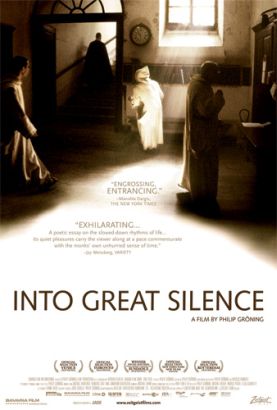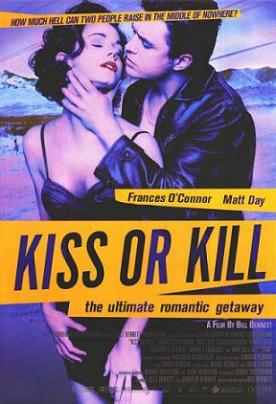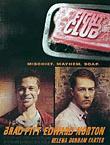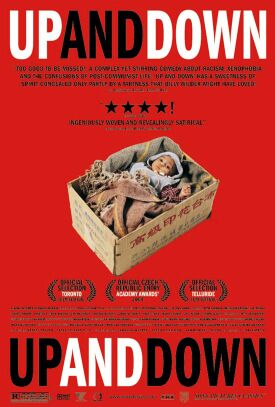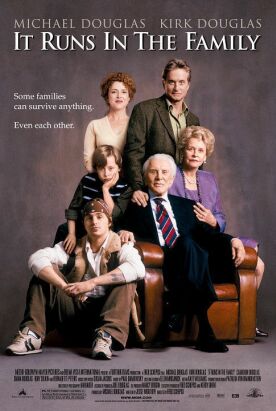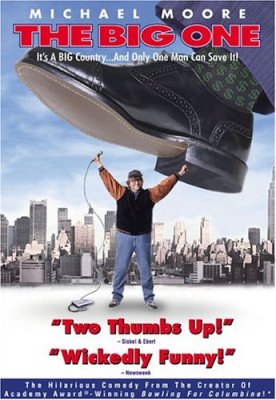Into Great Silence
Into Great Silence by the German film-maker Philip Gröning had to wait 16 years to be made. He first wrote to the Carthusian monks at the monastery known as la Grande Chartreuse in the French Alps, asking to film their daily lives in 1984, but it wasn’t until the turn of the millennium that they decided they were ready for such exposure. That slowness is reflected in the time frame of the film itself, which gradually unfolds over more than two and a half hours but which seems even longer because you have to look very carefully to see anything much happening during that time — apart from the passage of the seasons. The film begins and ends in winter, and we witness the other seasons looking through the monastery windows, as it were, on the magnificent Alpine landscape where nothing else human can be seen — except for the tiny speck of a passenger jet passing overhead in the bright blue sky.
Apart from making Robert Bresson look like Joel Silver, the long, slow cinematic rhythms also echo those of the monastic life being depicted. This appears framed by contrasts between the exterior shots of nature at its most impressive and the interiors of the monastery which are of three kinds. First, there are the cells where the individual monks spend most of their time. These are organized around a cloister like so many little hermitages and look Spartan, cold and uncomfortable. We are introduced to them in the opening shot of a monk at his prie-dieu who interrupts his prayers from time to time to adjust the feeble heat being given off by the cast-iron stove in the foreground. Then there are the barrel-vaulted cloisters down which the monks move on the way to the chapel or along which one of them wheels his little cart with the meals he shoves through the doors of the cells, like a prison trusty. Finally, there is the chapel itself, which is nearly always shot from the clerestory view — that is from high up near the vaulted ceiling, so that the monks below who are seen praying or holding services or, on one occasion, sleeping, are dwarfed by the ecclesiastical edifice.
And just as they are put into perspective by the chapel, the chapel and the rest of the monastery’s buildings are put into perspective by the exterior shots, which are mostly of the sky or of the mountains round about that make them look similarly small. As with the distant airplanes swallowed up in the immensity of sky, the human is constantly being dwarfed by the space that contains it. Of course, the monastic vocation is also all about establishing the right relation between exterior and interior, and the film’s concentration on the same in cinematic terms is a powerful analogue of this spiritual reality to which it is attempting to give expression.
Another cinematic analogue of the monastic life comes with the interludes of long-take closeups of the monks, who stare into the camera in silence for what seems like an age — until it starts to become uncomfortable to go on looking at them. Their lives of self-examination are challenging us to examine them too — as well, perhaps, as ourselves. Significant passages of scripture, or devotional literature, appear and reappear in French and German on cards which invite us to contemplate them for a moment before we go back to pictures. There is almost no dialogue. Like the monks themselves, we hear the human voice only in prayers, the liturgy and the chants of the mass and, at the one meal a week taken communally, when a monk is appointed to read from the rules of their order.
The words, whether on the cards presented for our consideration or the few that are spoken among the monks, become more freighted with significance when there are so few of them. In the same way, the silence of nature is broken only by birdsong, which thus takes on an indescribable sweetness. Once a week, after the monks’ Sunday dinner, they are permitted to go for a long, recreational walk, and this is the only time they can speak to each other like normal people — though even then they must preserve a monkish decorum described by their rule as la grande réserve.
Similarly, the film’s own “great silence” is finally broken near the end in a couple of shots from an ordinary, documentary-style interview with one of the monks. He speaks of his happiness at being brought close to God by this life — and even more by approaching death — and he gives thanks to God for his blindness: “I’m sure it was for the good of my soul.” There is a forbidding distance from the world of ordinary human life in such holiness which acts as a kind of justification for the spaciousness and distances that Mr Gröning’s film uses to frame its portrait of the monastic life. You may find it, as I did, very moving, but you’ll have to be extremely patient — and quiet.
Discover more from James Bowman
Subscribe to get the latest posts to your email.

